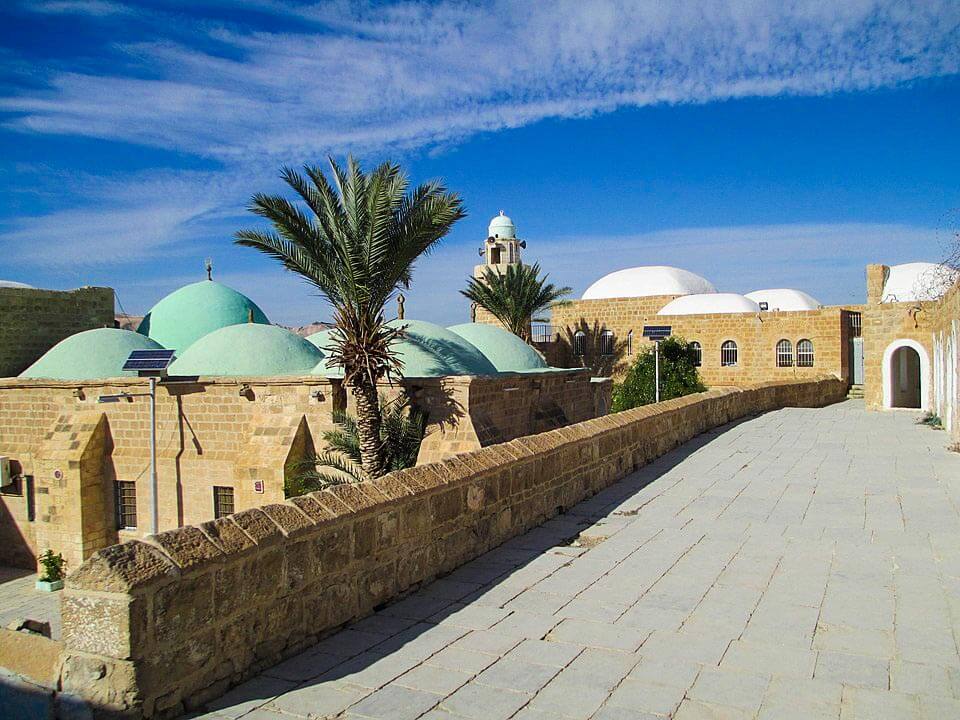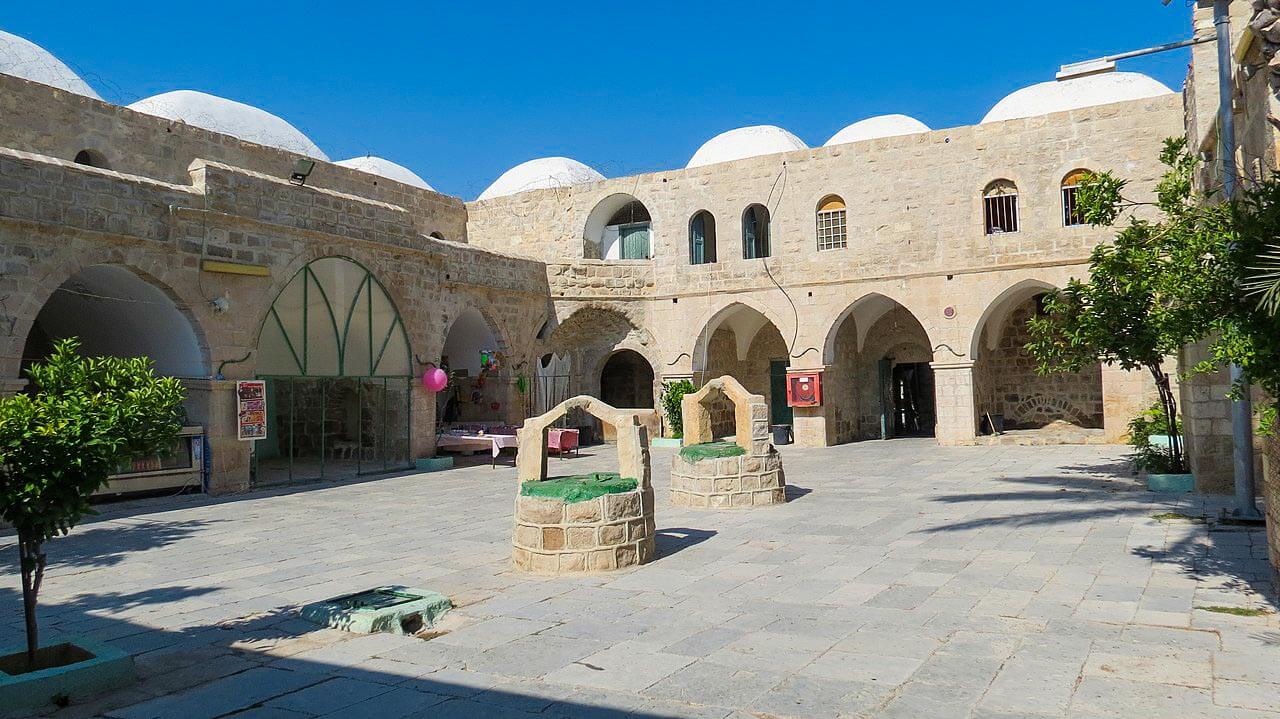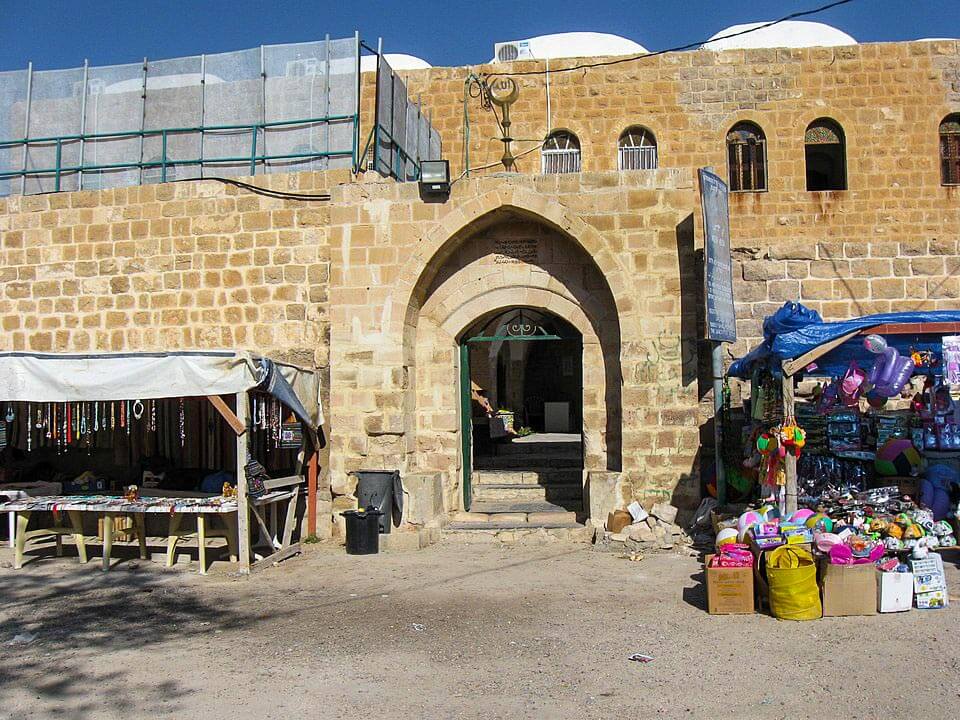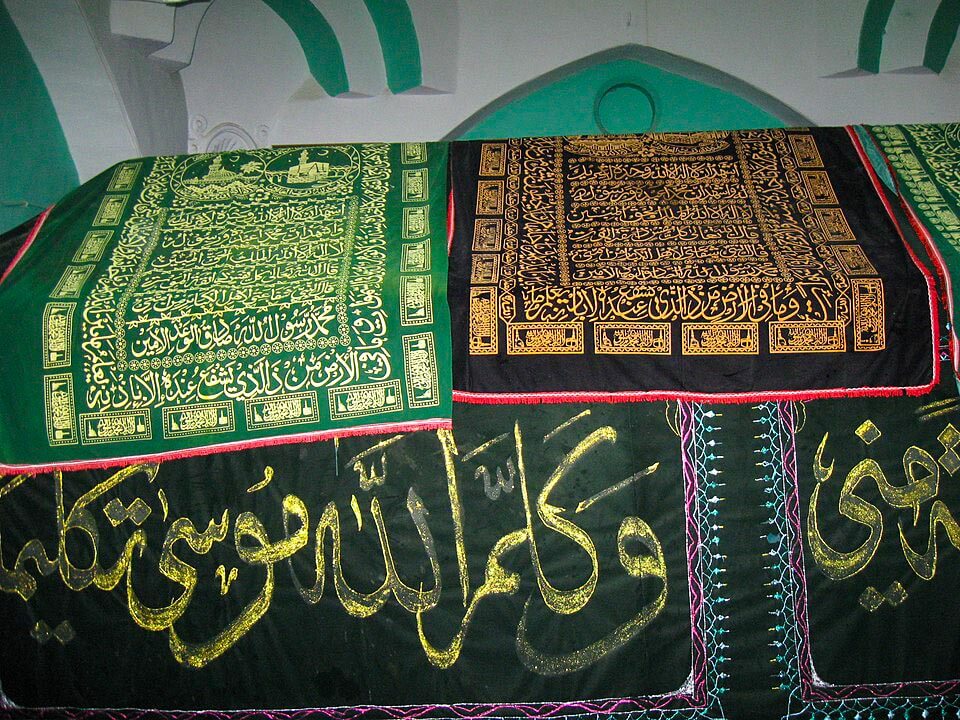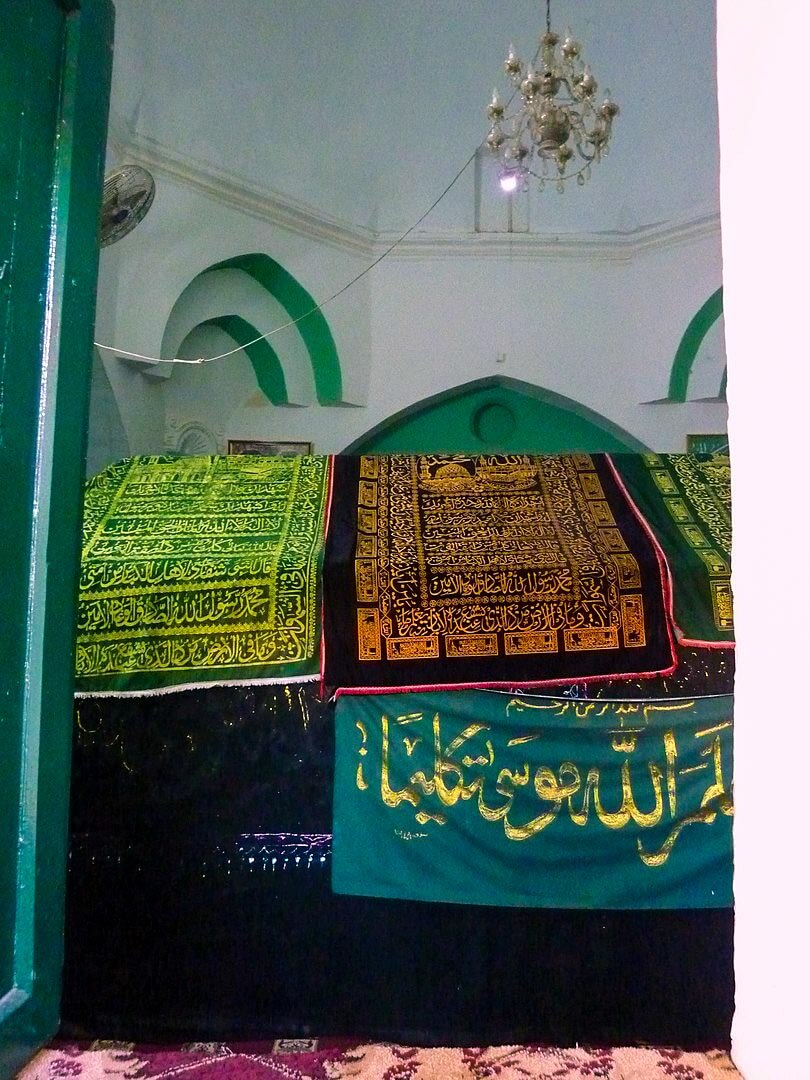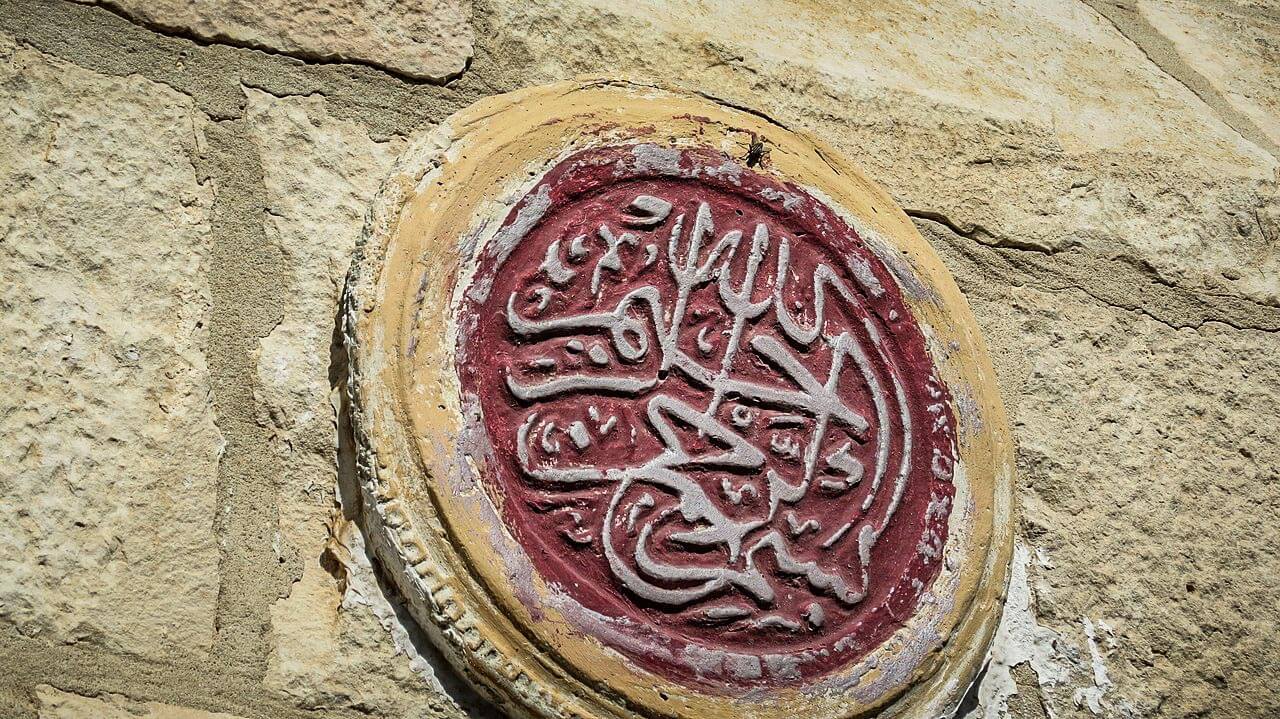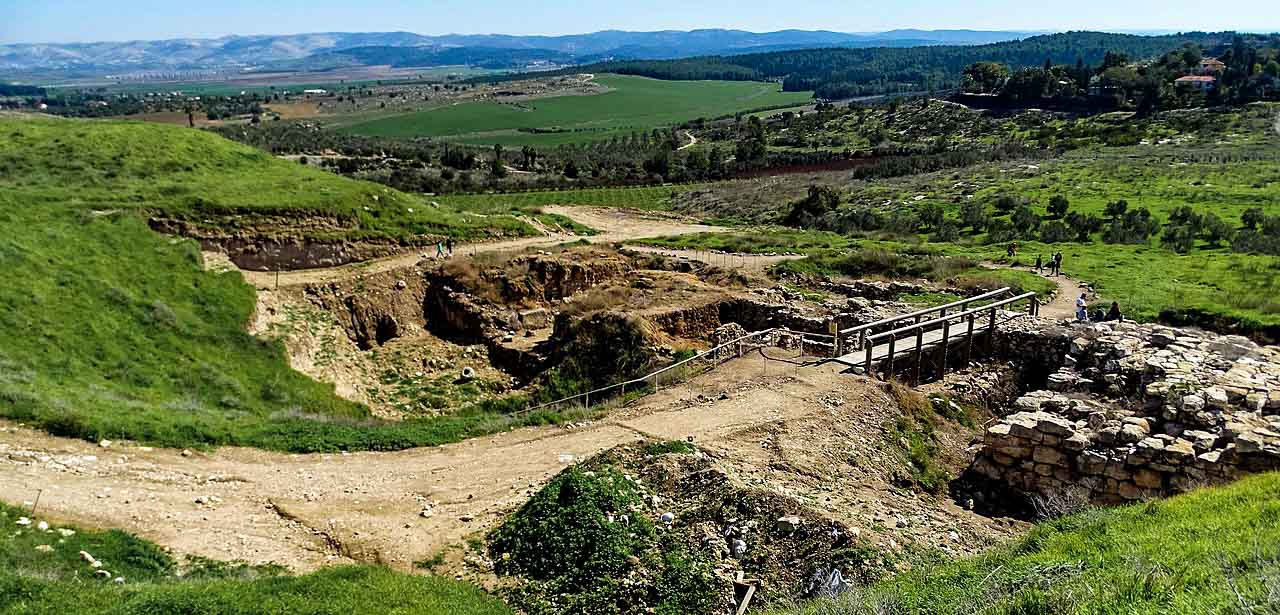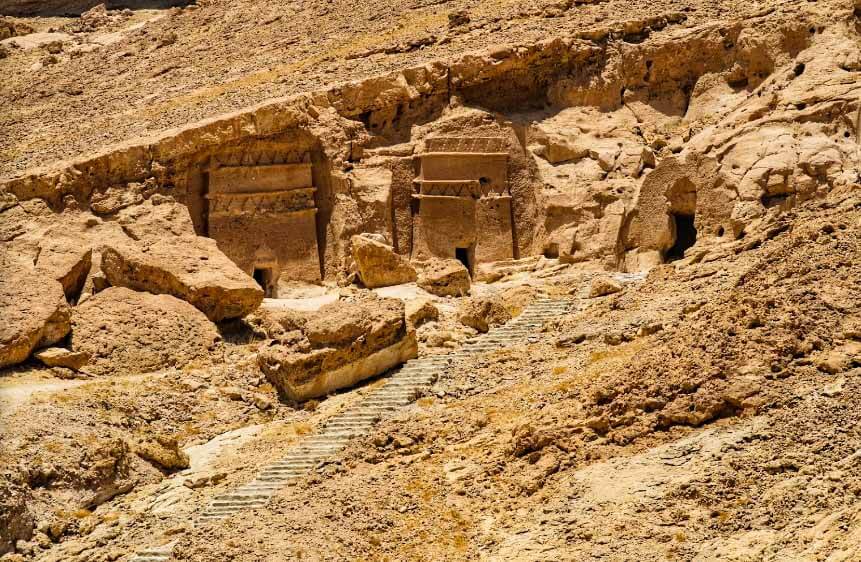An-Nabi Musa, West Bank – Palestine
Coordinates: 31.786525, 35.431547
Nabi Musa (also knows as An-Nabi Musa, meaning “The Prophet Moses”) is the name of a site in the West Bank believed to be the tomb of Hz. Musa عليه اسلام.
It is also the name of a seven-day long religious festival that was celebrated annually by Palestinian Muslims, beginning on the Friday before Good Friday in the old Greek Orthodox calendar.
Considered “one of the most important Muslim pilgrimages in Palestine”, the festival centered on a collective pilgrimage from Jerusalem to what was understood to be the Tomb of Hz. Musa عليه اسلام, near Jericho.
Tomb
The shrine of Hz. Musa عليه اسلام lies 11 km south of Jericho and 20 km east of Jerusalem in the Judean wilderness.
It is believed that Hz. Musa’s prayed Allah to let him die close to the Sacred Land (Al Aqsa) so that he would be at a distance of a stone’s throw from it.
His prayer is said to have answered as Hz. Salahuddin Ayyubi رحمة الله عليه once had a dream where he was shown the location where Hz. Musa عليه اسلام was buried and thus had a shrine built in honor of him.
“Tomb of Hz. Musa عليه اسلام” tradition
The maqam of Nabi Musa
The “Tomb of Moses” is located, according to local tradition, at Maqam El-Nabi Musa. The Fatimids, Taiyabi and Dawoodi Bohra sects also believe in this tradition.
The sanctuary welcomes the faithful all year round for pious visits (Ziyarat), but it is during the annual pilgrimage (mawsim), which takes place in April, that the attendance is the most important.
Most pilgrims come from the cities of Jerusalem, Nablus and Hebron, as well as from the surrounding villages.
The Jerusalem-Jericho road was one of the primary routes used by Mediterranean Arabs to make a pilgrimage to Mecca.
It seems that by the time that Mamluk sultan Baibars visited the site in 1269 while returning from his hajj, “there must have been some association”, since he set about building an extensive shrine.
The Arab geographer Muqaddasi from Jerusalem, writing in the 1490s, admits that the tradition has only a weak chance of authenticity, but that Nabi Musa still is the most popular among several sites with similar claims.
The Death of Moses – Moses Suffering (Narrated by Ibn Kathir)
Hz. Abu Hurairah رضي الله عنه narrated: “The Angel of Death was sent to Hz. Musa عليه اسلام. When he came to Hz. Musa عليه اسلام, he slapped him on the eye. The Angel returned to his Lord and said: ‘You have sent me to a slave who does not want to die. Allah said: ‘Return to him and tell him to put his hand on the back of an ox and for every hair that will come under it, he will be granted one year of life.’ Hz. Musa عليه اسلام said: ‘O Lord! What will happen after that?’ Allah replied: ‘then death.’ Hz. Musa عليه اسلام said: ‘Let it come now!’ Hz. Musa عليه اسلام then requested Allah to let him die close to the Holy Land so that he would be at a distance of a stone’s throw from it.” Abu Hurairah added: “Allah’s Messenger (pbuh) said: ‘If I were there, I would show you his grave below the red sandhill on the side of the road.
(Sahih Al Bukhari)
Moses (pbuh), Prophet of Allah and the one to whom Allah spoke to directly, met his death with a contented soul and a faithful heart that looked forward to righteousness and made haste to meet with him who bore tidings of peace.
Know This
A side road to the right of the main Jerusalem-Jericho road, about 2 km beyond the sign indicating sea level, leads to this site.


